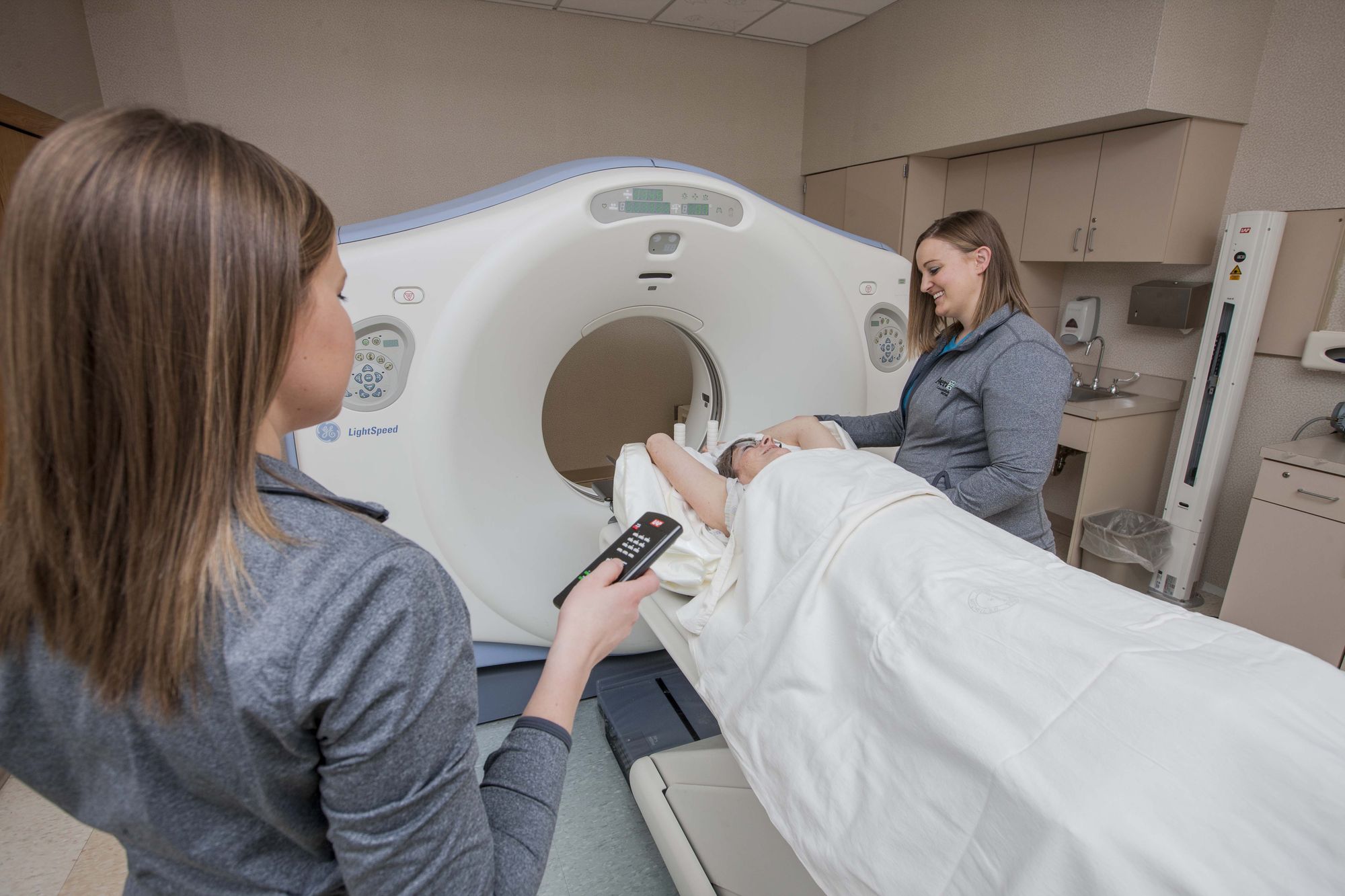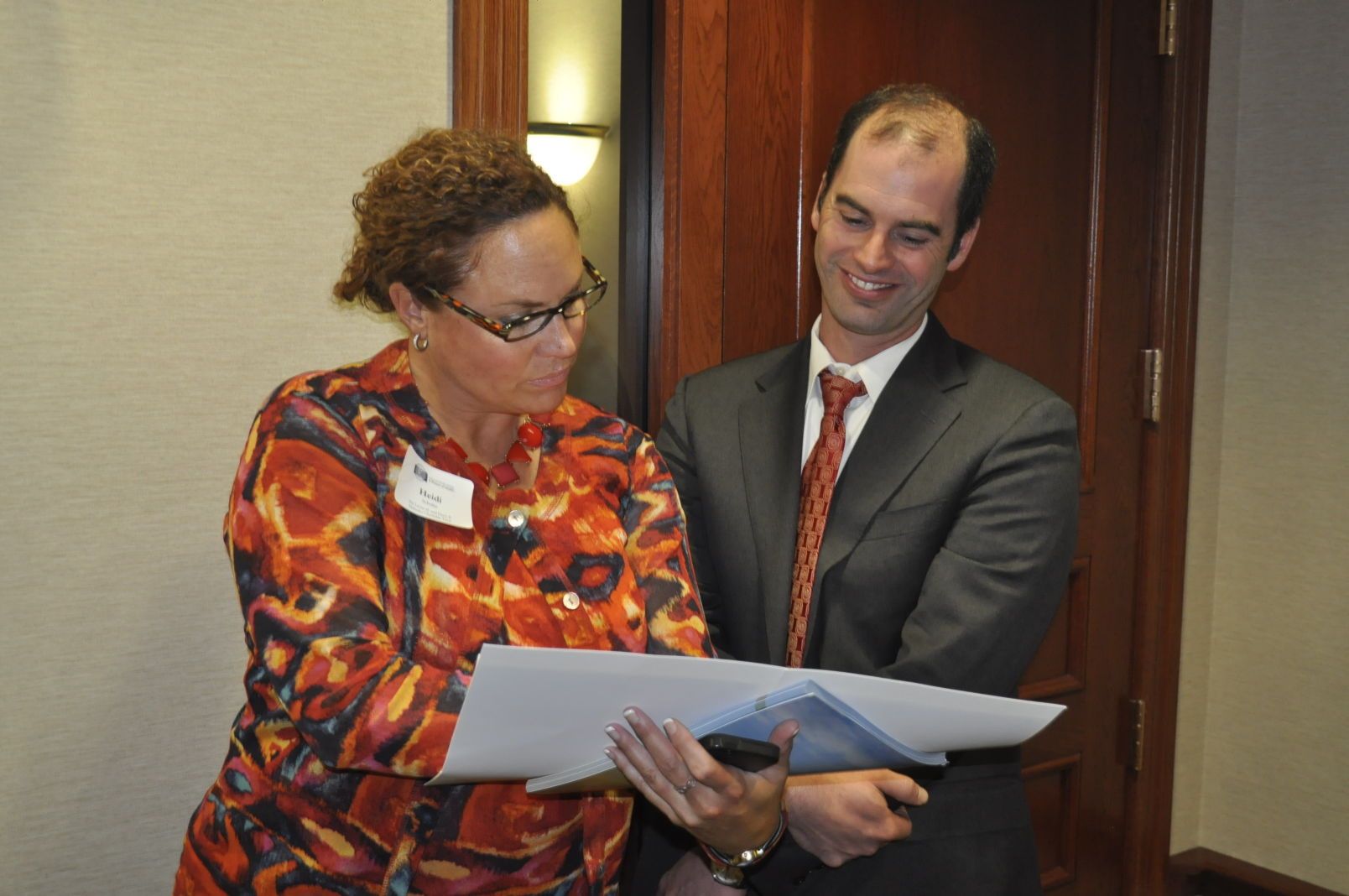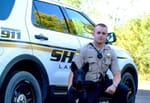BISON, S.D. – Obtaining quality medical care is difficult for the roughly 350 residents of Bison and studies show that they and others living in remote rural areas of America have a higher mortality rate as a result.
The northwestern South Dakota town lies about 30 miles from the North Dakota border. Horizon Health Care runs a small clinic staffed by a physician’s assistant, but it is only open weekdays from 8 a.m. to 5 p.m. and services are limited.
Receiving care at a more well-equipped hospital or visiting a medical specialist requires a drive of about 120 miles to Mobridge.
As medicine and medical procedures have continued to advance in recent years, much of rural America has been left behind.
Yet for roughly the past decade, a well-funded charitable trust has been pumping millions of dollars into technology, training and telemedicine programs to expand access to health care in rural areas. Now, the Helmsley Charitable Trust hopes to bring remote robotic open-heart surgery to small towns across the Great Plains, including in South Dakota. Research is ongoing, but a recent successful test of the remote surgery in India has given Helmsley trust officials hope that they can help people in small-town America get life-saving heart surgery without the time, cost and hassle of traveling across the state to get it. By installing robotics in rural hospitals, the system would allow a specialist with a joystick to conduct heart surgeries hundreds or even thousands of miles away.
“This could be a game changer not just for rural America, but across the globe,” said Walter Panzirer, a trustee of the Helmsley trust who lives north of Pierre. “It would totally level the playing field so you’re not having any different care in Sioux Falls or Rapid City or in any small town in South Dakota.”
In general, improving services and installing new technologies in rural areas is expensive and may not be cost-effective with few patients to serve. Specialists and experienced physicians typically don’t practice in small towns or remote regions.
Federal and state governments, as well as private medical providers, have engaged in studies and created programs in an attempt to improve access to health care for rural residents.
Improving care often boils down to finding money to better equip medical facilities, train more physicians and expand communication between remote and urban providers.
On many fronts, rural communities in South Dakota and six other Great Plains states have benefited greatly from investments made by the philanthropic trust funded through the estate of the late hotel and property magnate Leona Helmsley, who died in 2007. Improving the quality and access to health care in rural areas is one goal of the Leona M. and Harry B. Helmsley Charitable Trust, which had an initial endowment of about $5.5 billion.
To date, the Helmsley trust – which has an office in New York City and another in Sioux Falls – has made 414 grants worth nearly $400 million to improve health care delivery, expand training of the medical workforce and spur innovation in rural health care in South Dakota, Iowa, Minnesota, Montana, Nebraska, North Dakota and Wyoming. In South Dakota alone, the Helmsley trust has invested nearly $100 million to improve rural health care.

Coordinated care saves a life
Jason Semmler of Parkston was having a beer at a bar in 2011 when he almost fell victim to the risks associated with limited rural health care.
Semmler, then 41, recalls his eyes began to water excessively and when he tried to remove his glasses, they fell from his limp hands.
His wife rushed him to the Avera St. Benedict Hospital in Parkston and the emergency room physician there, Dr. Jason Wickersham, quickly began a diagnosis.
Though Wickersham is highly respected in Parkston, and had colleagues in the room with him, none was an expert on the so-called clot buster drug that can either cure or kill someone experiencing a stroke.
Rather than rely on their own limited experience with the medication, Wickersham used a wi-fi connection and TV screen to immediately link up verbally and visually with doctors at Avera Health in Sioux Falls, including a neurologist who specialized in use of the clot buster.
The link-up is part of a wide-ranging system of medical treatment known as eCare that Avera uses to connect specialists and experts at its Sioux Falls hub to doctors working in small town or rural hospitals across the Avera footprint. After Panzirer became aware of eCare, the Helmsley trust began investing heavily in the system, providing more than 150 grants totaling $77 million to expand the types of care and range of eCare services across the Great Plains.
As Semmler drifted in and out of consciousness in the Parkston hospital, his family members conferred with the Sioux Falls specialist and learned the odds, risks and potential benefits of the medication. Semmler’s family decided to go ahead with the clot-busting drug, and Semmler quickly improved during a flight to Sioux Falls. Once there, surgeons who were briefed on the case via the remote connection were ready to operate and repair what was determined to be a hole in Semmler’s heart.
Semmler, now 48, made a full recovery and is back at work in the feed division of Farmer’s Alliance in Mitchell. He looks back on the ability of doctors in Parkston to link up with those in Sioux Falls as a life-saver.
“I’m not saying Dr. Wickersham couldn’t haven’t figured it out, but it connected him with a bigger system where all of a sudden you have a bunch of doctors talking it through,” Semmler said. “Anytime you can connect Parkston, a town of 1,500 people, with doctors in Sioux Falls or at the Mayo Clinic or a hospital of that size, it’s just like being there with that technology and experts.”
The eCare program at Avera began before the Helmsley trust got involved and early efforts featured video links between a doctor and remote patient that sometimes had grainy or shaky images that reduced efficacy, said Deanna Larson, CEO of the eCare Program at Avera Health that provides remote services in more than 20 states.
Since partnering with Helmsley, Avera eCare has received about $22 million in grants to expand offerings, Larson said. Overall, Avera hospitals across the Great Plains have received almost $52 million in Helmsley grants.
“Without their base of building all of this, we would not be where we are today and rural health care would not be where it is today,” Larson said. “We have saved, that we know of, thousands of lives.”
One system allows a pharmacist in Sioux Falls to safely dispense drugs at rural hospitals where a pharmacist is not present or has gone home after hours; another provides expert help in intubating patients.
Wickersham said eCare has helped him save the life or expedite the diagnosis and recovery of numerous patients. The eCare emergency room link is established by pushing a button to engage the system. The hospital pays a fee for the service but the patients are not charged extra, Wickersham said.
In another case, a Parkston area farmer rolled his tractor and impaled his neck with a shift lever. Wickersham recalls connecting with Avera specialists to decide whether to remove the lever from the man’s neck before transporting him to Sioux Falls, a decision complicated by the fact the patient was on a blood-thinner. By engaging specialists, including a plastic surgeon, Wickersham determined that leaving the lever in the man’s neck was the best option.
Once in Sioux Falls, the man was greeted by vascular and plastic surgeons who were already briefed on the case and safely removed the lever.
“Even though I’m out here in this isolated rural area, I have that great backup support just by pushing the button on the wall,” Wickersham said. “You may be hundreds of miles from necessary medical services and this is a great way for a smaller rural facility to have necessary and potentially life-saving services that otherwise wouldn’t be available.”
Helmsley grants in South Dakota
The efforts of the Helmsley Charitable Trust include a grant program to improve the quality and access to rural health care in seven Great Plains states that include South Dakota. Here is a look at grants made over the past decade by the trust in South Dakota.
Targeted service Grant amounts to date
Telemedicine $31.5 million
Cardiac/stroke care. $13.5 million
Cancer care $30.6 million
CT scanners. $ 4.5 million
EMS training/SIM $ 5.8 million
Advocacy/education $ 2.0 million
Conservation. $ 2.0 million
Medical education $ 1.2 million
Behavioral health $ 9.8 million
Total $100.8 million
Source: Helmsley Charitable Trust
Data reveal rural health risks
Residents of rural areas face increased chance of death compared to people in more urban or highly populated areas, according to data from the Rural Health Information Hub, a statistical service of the U.S. Department of Health & Human Services.
For people living in a rural county without a city of 10,000 or more people, the chance of death is roughly 30 percent higher from chronic pulmonary obstruction, heart disease or other unintentional deaths when compared to people living in a large metro county.
Furthermore, the federal data show that the chance of surviving a preventable death from stroke, heart disease or cancer is about 50 percent lower for rural residents compared to those in urban areas.
A report called “Healthy People 2020,” compiled by the federal Office of Disease Prevention and Health Promotion, notes that adequate access to health care leads to generally improved health and well-being. People with reliable access to health care are more likely to prevent disease and disability, have health problems detected earlier and see increased life expectancy and quality of life.
Other drawbacks of rural health include higher rates of uninsured people in remote areas and a lack of qualified health care providers. The National Rural Health Association reported that less than 10 percent of American physicians work in rural areas even though nearly a quarter of the national population lives in those areas.
South Dakota faces the same health care challenges as other rural states.
Geographically, the state is the 16th largest in the nation but is 46th in population and 47th in population density, according to U.S. Census data.
In 2016, the state Department of Health published the South Dakota Primary Needs Assessment, which examined access to health care across the state.
The report indicated that major deficiencies in access and other health risk categories exist in 10 rural counties – Buffalo, Bennett, Corson, Dewey, Gregory, Jackson, Mellette, Roberts, Todd and Ziebach.
The report said that “health professional shortages” are present in all but 18 of the state’s 66 counties, that residents are “medically underserved” in all but 19 counties, and that mental health services are lacking in all but six counties.
The deficiencies are more pronounced in the northwest quadrant of the state, which is the least populous.
To improve access to health care in remote areas, South Dakota participates in a federal program that provides full Medicare reimbursement to certain rural hospitals and clinics. Known as Critical Access Hospitals, the facilities must be located 35 miles or more from another hospital and provide 24-hour care on site or through on-call providers. South Dakota has 38 critical access hospitals, though only nine are West River.
In some cases, the report said, patients must travel “extraordinary” distances to receive medical care at a critical access facility. Residents of Buffalo must drive 89 miles each way to Sturgis for health care, those in Faith must travel 81 miles each way to Philip, and Bison residents must drive 120 miles each way to Mobridge, the report said.
“These factors all heavily impact the ability for residents in South Dakota, particularly in western rural and frontier counties, to access emergency or acute health care,” the report said.

Fulfilling a dream to help others
Panzirer, 43, was a former police officer and emergency medical technician when he learned his grandmother had died and named him as a trustee of her foundation. Suddenly, he became one of three leading deciders in an effort to spend many millions on programs ranging from environmental conservation to aiding vulnerable children in Sub-Saharan Africa. Other Helmsley grant efforts include helping Israel, improving life in New York City and funding research into Type 1 Diabetes and Crohn’s Disease. Additionally, Panzirer has made it a mission of the trust to improve access and quality of rural health care.
“It should not matter where a person chooses to call home, the health care should be equal in a rural setting or an urban setting, and your access to health care should be equal,” Panzirer said. “I feel that in the past rural America has been marginalized, and this is really leveling the field and taking care of people where they are.”
Beyond eCare, Helmsley grants in South Dakota have funded development of cancer care centers, expanded offerings of robotic surgery and paid for trucks that simulate real-world challenges faced by emergency medical responders to deepen their skills. The trust also dramatically expanded rural access to digital mammograms by purchasing about 50 machines that provide sharper images to aid in breast cancer diagnosis. The digital machines provide easier sharing of images and can reduce the use of radiation and need for mastectomies. The trust is also working with Avera to expand the use of telemedicine to increase behavioral health offerings in remote areas.
In November, Panzirer went to India to witness the first use of remote robotic heart surgery. He watched as a doctor with a joystick directed a robot in a hospital 20 miles away to send a catheter into a patient’s beating heart. With great precision, the doctor and robotics worked together to perform an angioplasty to break up a blockage and insert a stent to ensure future blood flow.
The trust gave the Mayo Clinic in Minnesota $3.3 million to study the process for possible implementation in rural America.
Panzirer said the trust will work with any hospital ownership group or individual hospital to improve health care processes or delivery methods. In South Dakota, the trust has provided grants to several providers, including Avera, Sanford and Regional health systems. The trust also aided the state in ways unrelated to health care. In 2018, the trust gave $1.8 million to Custer State Park to aid in aerial mapping, tree thinning and stream rehabilitation following a bad wildfire in the park the year before.
Panzirer said having the ability to impact lives in rural America and elsewhere is a big responsibility but also a great joy.
“To me, this isn’t work,” he said. “It’s amazing, like a dream every day.”




